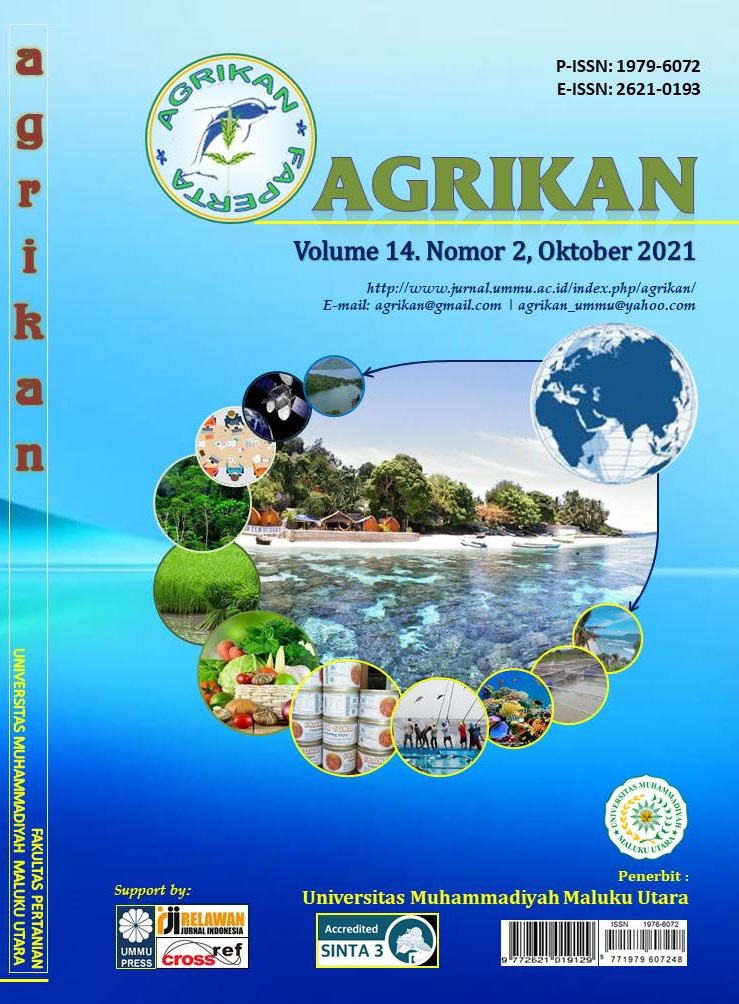Effect of Salt Concentration on Organoleptic and Microbiological Attributes of Mackerel scad (Decapterus macarellus)
DOI:
https://doi.org/10.52046/agrikan.v14i2.806Keywords:
Influence salt, quality, taste, Mackerel scadAbstract
The salting is one of the traditional methods of processing fishery products that have an important role both in business and efforts to fulfill protein. The purpose of this study was to determine the effect of salt concentration and soaking time on the sensory value of flying fish. The organoleptic testing, total plate count, and analysis using a completely randomized design (CRD). Salting of fish with the total water method used is 4.5 liters using bulk salt for the treatment of A1 300 grams, A2 1 kg and A3 1.5 kg. The process of drying saltting fish using sunlight during the drying process from the morning at 08.00-16.00 WIT depending on the weather conditions drying process 3-5 days with an average temperature of 28-33 oC. Organoleptic test results of salting flying fish that have the best value, namely for the appearance with A3 treatment for salt concentration of 1 Kg with a value of 8.84, for the A2 salt odor concentration of 1 Kg with a value of 8.56, taste A2 with a salt concentration of 1 Kg with a value of 8.12, A3 texture for 1.5 Kg salt concentration with a value of 8.76. Meanwhile, for the ALT test, the smallest bacterial value is 1 Kg A2 with a value 1.1. Thus, mackerel scad salted products are still suitable for consumption.
Downloads
Published
Issue
Section
License
Copyright (c) 2021 Azis Husen, Ahmad Talib, Jumahir Hairil, Frits Jamlaay

This work is licensed under a Creative Commons Attribution 4.0 International License.

This work is licensed under a Creative Commons Attribution 4.0 International License.













